Not every day one has the chance to have a conversation with such reputed physicists as Alessandro Bettini and David Nygren. The equivalent, if we were dealing with musicians, would be to interview Bob Dylan and Leonard Cohen, or perhaps Jagger and McCartney. These two old rockers -both aged close to three quarters of a century, although you wouldn’t tell from their looks- represent the cream of the crop of particle Physics in Europe and the United States of America. They are joined by (in his role as sorcerer’s apprentice) Juan José Cadenas, director of the NEXT experiment, frequent collaborator and groupie of these two heavyweights.
Alessandro (Sandro) Bettini has held during several decades a chair in the same institution as Galileo Galilei did, namely the University of Padova. He is one amongst the exquisite school of italian physicists, direct heirs of Fermi and his ragazzi da Via Panisterna. A scientist of international renown, Sandro has also been director of the Laboratorio Nazionale di Gran Sasso, the LNGS, a sort of elder brother to the Laboratorio subterráneo de Canfranc (LSC) which he currently directs. The signing of professor Bettini on behalf of the LSC, going back to metaphors, would equate the miracle that would allow a combative Getafe or Atletic to steal a football player like Cristiano Ronaldo from Real Madrid.
And if Sandro Bettini can be compared to Ronaldo, we can only compare David Nygren with Messi. We are talking about someone who for many is the best instrumental physicist in the field of nuclear physics and high energies worldwide. A distinguished scientist from the Lawrence Berkeley National Laboratory (LBNL), an institution that has had within its ranks no less than 13 nobel prize winners in Physics (to be compared with the resounding spanish amount of zero). Thirteen which could be fourteen any of the forthcoming years, since Dave is a more than obvious candidate to the coveted prize.
His most well-known success is the invention of the Time Projection Chamber (TPC) in the mid-seventies. This device (basically an electronic photographic camera used to measure paths of subatomic particles) is used, nowadays, in big experiments in the LHC, and has found applications in fields such as medical physics and is the foundation of experiments like NEXT, designed to look for double beta neutrino decay. But Dave, like Messi, is not a player who is in the field to stay idle, not even at his 25×3 years of age. He has invented the instrument and now wants to play with it, to see, like Galileo, the craters of the moon. And his TPC, incarnated in the family of experiments of which NEXT would be the first generation, has the ambition to prove that the neutrino is its own antiparticle, or detect the trace of a particle of dark matter.
If the interviewees are a privilege, the environment is not less so. We are in the Santa Cristina Hotel, close to the Tobazo mountain, the Canfranc underground lab and its new building that we have invaded during the morning, cameras in hand. The personnel of the lab, headed by its scientific secretary, Yolanda Labarta, greet us with such kindness and enthusiasm that the visit extends for several hours. We take photos and videos, talk to the national and foreign members of NEXT and we come to the conclusion that this bunch of scientists seem to be having a ball with their work. And those who have most of the fun seem to be our interviewees.
Dave, ¿what is dark matter and what is its importance in the current cosmological model?
D: If dark matter were money in the bank account of the Universe, the IRS would be investigating it for fraud, since it doesn’t want to show us all its assets. We know indeed that dark matter, the one that the universe hides from us, exists in a ratio of five to one to what we see, like stars and planets. We don’t know the nature of this dark matter and establishing it has become one of the central issues in Physics and Cosmology.
Alessandro, it’s surprising that we have to go inside a tunnel below a mountain to find answers to the questions posed by the Universe. Why is that so?
A: In our field we are on the lookout for very rare phenomena that are, therefore, very unlikely. The Physics that is carried out in underground labs is the scientific equivalent of finding a needle in a haystack. The needle would be the weak signal, let’s say, of dark matter. The haystack, the enormous noise in the background that can mask it and is due to a multitude of sources, such as natural radioactivity, that includes the bombardment of cosmic rays and the radioactive shower that springs from the abundance of thorium and uranium in the rock. We live in a quite radioactive planet and this fact makes our work very difficult. In subterranean labs all this background noise is quite diminished.
Alessandro, in the LSC two experiments related to the detection of dark matter are being carried out. One of them is ANAIS, aimed at detecting the hypothetical particles named WIMPS, the nature of which is not exactly known. ¿How does ANAIS manage to detect them if their intrinsic qualities are unknown? Like mass, for instance.
A: To begin with, I’d like to comment that the name WIMP is a play on words, it is an acronym of the words Weak Interacting Massive Particles whose initials mean as well “wimp” in the sense of weakling, since these little beasts have no interest in dealing with ordinary matter. They are particles similar to neutrinos but much heavier.
J.J.: A WIMP is a sort of neutrino on steroids.
A: We believe that the galaxy is full of WIMPS. Since the earth and the solar system move inside the galaxy, they cross these clouds of WIMPS and the equivalent is that a rain (or wind) of dark matter falls upon us. The intensity of this wind, besides, changes with the seasons, since sometimes the earth moves in its direction and other times against it, and therefore we state that the frequency of dark matter must be modulated. When a WIMP hits the nucleus of an atom it recalls it and makes a small quantity of light; and this light can be detected by our devices.
Some months ago the episode of supraluminic neutrinos seemed to put into doubt the basic principles of Physics. What motivation lies behind the interpretation that CERN physicists gave to the results? Did they rush to conclusions?
D: Yes, it was an act of bravery in part to announce something that violates Einstein‘s theory of relativity that has been so well proven in everything else we knew. It must be said that the actual paper by the OPERA group was fairly carefully written. However, it was largely taken by the popular presses to claim to have seen superluminal neutrinos. It would have been better to not publish it but to quietly invite people to come and look, since it’s often easier for someone who comes from outside and is not biased, to notice a mistake that the scientists who carry out the experiment don’t see. In any case, it’s unfortunate because it leads to the belief that scientists are not too be trusted or they’re not competent. It was indeed a very demanding task to know the relative positions and time to a few nanoseconds between Geneva and the Gran Sasso. I think that their mistake is understandable, but they should have been more cautious.
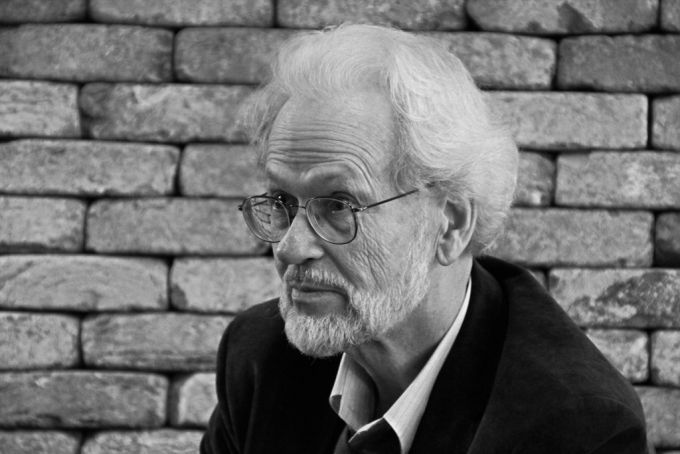
Alessandro, the theoretical frame with which physicians describe matter and energy, known as the Standard Model, describes each particle according to a mathematical field. Under this model several theories with an important predictive capacity are grouped together, such as quantum chromodynamics, but there are also important voids that you describe in your book Introduction to Elementary Particle Physics, in its conclusion you describe things that still haven’t been recognized by the Standard model. ¿Is it possible that particle physics is developing in a similar way to what happened with the Ptolemaic cosmological model?
A: The Ptolemaic model was not a predictive theory, in the sense that the Standard Model or relativity theory are. The Standard Model takes in all forces except gravitation. It works perfectly with a few exceptions; neutrinos are assumed to carry zero mass, which we know it’s untrue. There exist possible modifications of the standard model (or rather, of the theory) to include neutrino mass and others that would allow to explain the existence of dark matter, such as supersymmetric theories. All these theories expand the SM but don’t invalidate it, in the same way as the theory of relativity does not invalidate Newton mechanics. On the contrary the Copernican model (derived from the theories of Newton) does invalidate the Ptolemaic model, that was nothing but an inaccurate geometrical construction.
Neutrinos are the other great protagonists of Canfranc together with dark matter.
A: Here’s hoping! (Laughter)
Amongst other reasons because they may have the key to explain the absence of antimatter in the Universe ¿is the neutrino its own antiparticle?
D: I think so!
(Laughter)
J.J.: A good reason to believe in them is that Majorana neutrinos can introduce in the early Universe a certain asymmetry between matter and antimatter that would explain why the current Cosmos is only made of matter. Majorana neutrinos are such a beautiful thing that it would be a pity that nature chose not to implement them, and nature seems to be pretty kind, when it comes down to making beautiful things she always delivers…and when it comes to neutrinos she is very generous with us.
Alessandro, the scientist who stated that possibility was the Sicilian Ettore Majorana, who disappeared mysteriously in 1938. What is the scientific legacy of Majorana? and which italian physicist do you admire the most? Galileo, Fermi, Majorana?
A: It’s hard to say who’s the greatest of the three. Majorana disappeared early in his career and his personality was complicated. He did not have much time to work, although he wrote great papers, they are only seven or eight, but all or almost all of them are great. Fermi was more open, and of course Galileo too.
J.J.: I remember reading a quote from Fermi in this fantastic book by Sciascia, La Scomparsa di Majorana, which says something like this: «There are physicists who are good, others are very good (like myself) and only a few are truly exceptional. Majorana was amongst these ones».
D: It is said that that Majorana and Fermi would do a complicated calculation and Fermi would use a slide rule and Majorana would use logarithms, but the logarithms were in his head, and he could do it faster than Fermi.
A: Probably this anecdote is true. It seems that Segrè, brought him to Fermi’s office when he was making some calculation on the blackboard. But the calculation wasn’t finished; Majorana was always smoking; so he took his pencil and wrote the formula on the back of the cigarettes packet, and the next day he visited Fermi and told him: «This is the solution».
(laughter)
David, there are many experiments in the world that try to demonstrate that the neutrinos are Majorana particles, using very different technologies; which one convinces you the most?
D: Let’s see. To make an experiment looking for such a rare decay, with an average life billions of times older than the age of the Universe, you have to gather all the information that Nature is providing. Is there an electron in this event, or there are two? Does that event have all the energy? does it look like a continuous line? NEXT is based on a TPC of highly pressurized Xenon gas and is capable of measuring the energy in a very precise manner and of registering the paths of the two electrons. This gives us a very unique method to demonstrate that the events that we register are truly a signal. In this respect NEXT is a great magnifying glass to look for the needle in a haystack.
Alessandro, the investment in underground labs worldwide, and especially in Europe, hasn’t stopped growing in recent times; regarding the ratio cost/productivity, what is performing better, the costly accelerators like the LHC or the underground labs?
A: They are different scales; the budget of this lab before the cuts is of a million and a half euros but…the budget of Gran Sasso is ten times bigger…and the budget of LHC a hundred times more. The issue is that the accelerators, at the end of the day, are limited. We can never reach Grand Unification energy which is extremely high. An accelerator could not achieve this energy in any way. The only way to explore this scale is to make it with subterranean experiments because the characteristic phenomena of a very high energy happen also in a very natural way, although in a very sporadic manner. Therefore subterranean physics is the physics of very rare phenomena. It’s almost, almost the physics of impossible things.
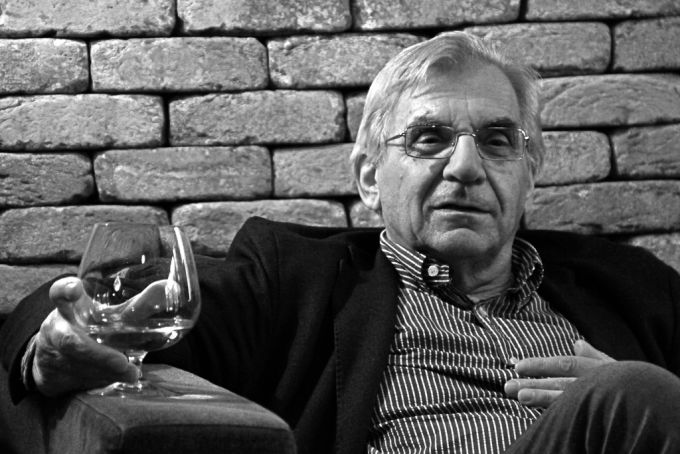
Dave, in one of the slides that we have seen of your lectures, it can be seen how as time goes by the number of physicists investigating grows, nevertheless the results that the general public sees are not proportional to this exponential growth. has there been a bad investment in this field?
D: When we look at the latest twenty years we notice that the most important discoveries were completely unplanned. We had no clue that neutrinos had mass and this discovery came from an experiment without accelerators. Another example is the discovery of dark energy, based on an experiment that many considered a waste of time, and now, you see…Nobel prize. Hence it can be deduced that it’s not so easy to plan where the money should be spent to achieve the best results.
Although physics is a high-risk investment…
J.J.: Exactly. Consider for instance Ray Davis Jr. in the sixties, when he had the idea to fill an Olympic pool with bleach, to obtain many tons of chlorine. Solar neutrinos can transmute an atom of chlorine into another of argon, and Davis pretended to know how to filter all the pool with chloride each month and find in it one or two atoms of argon. When he made this proposal, many comitees of serious guys screamed: Impossible! Premature! Unproved! By the way, one finds similar reactions to NEXT in Spain nowadays. But Davis detected solar neutrinos and demonstrated besides that we saw less than we expected to. It took him thirty years to be accepted, but in the end his measure was correct and we know today that the scarcity of solar neutrinos was due to neutrino oscillations. The serious guys changed from denying him funds to propose his candidacy for the Nobel prize.
David, your famous particle detector, the Time Projection Chamber, is unique in that although it was designed to be used in accelerators it’s being used in many different projects, like NEXT, ArDM, the Xenon 100 project…what is the key to the TPC’s great versatility?
D: Its simplicity…the detector does not almost contain anything, except what you want to put inside to achieve a three-dimensional image of the events that you want to study. By the way, I want to tell you a funny anecdote. Soon after proposing the TPC I received a phone call from the vice-president of General Electric, who in a very hushed tone asked me: «So you have a Time Projection Chamber…tell me: how far have you travelled in time, and in which direction?».
(Laughter)
D: I didn’t have the wit to say: «Well, just a little bit ahead»…more seriously now, these were very interesting times. At the beginning we didn’t understand the behaviour of the detector, but finally we managed to make it work. A combination of luck and stubbornness, I think it’s a good recipe in this field.
J.J.: The formula that we want to apply in NEXT is the same, to build a wonderful detector that allows us to buy lottery tickets from nature…and see if we win the prize.
Alessandro, both in the IFIC and Berkeley two versions of the prototype have been built that are going to be used now for the NEXT project with the aim of detecting double beta decay. What results do you expect from these prototypes?
A: The prototypes have already demonstrated the basic principles and the results that this collaboration has shown are vary, very promising. There’s still a lot of work to be done, though. We hope that it can be done, despite the crisis…
David, recently the DAMA/LIBRA experiment at the laboratory of Gran Sasso in Italy has presented data that may be interpreted as an unequivocal signal of the detection of dark matter from the galactic halo. What is your opinion about this?
D: The DAMA/LIBRA experiment is excellent in many respects. It’s the interpretation and the claim derived from the experiment that I dispute. They have not proved that that no other conventional explanation may explain the results, so I think that they are too eager to claim a major discovery.
A: ANAIS should be tested with the same technology, hopefully it will.
Alessandro, precisely you have been director of Gran Sasso, one of the most important centers in the world of particle physics, with a great tradition. What differences do you find when it comes to practicing science at the highest level between Spain and Italy?
A: The resources here are much more limited; the laboratory is ten times smaller, but nonetheless it’s possible to try some experiments like NEXT. In any case, it should not be forgotten that although it’s more modest than Gran Sasso, Canfranc is the second subterranean lab in Europe.
The Berkeley lab has thirteen Nobel Prizes; what is the secret of its high productivity? If the hypotheses about the nature of the neutrino are proven with NEXT , are there any chances that the LBNL might receive another Nobel Prize?
D: There’s something special about Berkeley and the Lawrence Berkeley lab, that are intimately connected; it goes back to Lawrence, but I think even more importantly to people like Alvarez, who established a style. A combination of arrogance and humility which is very interesting. You dare to do everything, but if you make a mistake you admit it and it’s ok. It’s a typically american way to operate, we try things, we make a mess and if we have to start all over again it doesn’t matter. Sometimes it doesn’t come out all right, sometimes we make fools of ourselves, but that counts as well. This culture sticks and the LNBL responds to it. When I arrived in Berkeley, my mentor Jack Steinberger (a Physics Nobel prize) told me: «don’t take funding agencies very seriously, they are always complaining, just do what you think is right». And this kind of culture, a combination of arrogance, humility and a sort of american can do type of attitude, is the reason why I believe we have so many Nobel prizes. Now whether we get another one depends on Mr. Gomez Cadenas and his leadership, as well as the support of Sandro. But the discovery of the neutrino with double beta decay in a really convincing way would be a Nobel Prize stature discovery.
J.J.: I’d like to allow myself the luxury of not taking budget agencies seriously. By the way they keep on complaining…
D: It’s their thing.
The investigation of the nature of the Universe seems to be the area of physics which attracts most researchers; nevertheless, much more practical things to non-physicists like superconductivity at ambient temperature or cold fusion seem to have less adepts than theoretical physics. Why do the most qualified researchers prefer to understand the world rather than technical progress?
A: The practical implications of basic Physics are not obvious, but they arrive sooner or later, sometimes directly and other times indirectly. For example, when Faraday discovered electromagnetism apparently the english Prime Minister asked him: «what are its practical implications?». And Faraday answered «I haven’t got a clue, but I know that you will put taxes on it».
(Laughter)
Alessandro, back in 2007 you wrote an article in which you listed the different underground labs in the world and the nature of the projects that are being developed in each one of them. Nowadays, what does the LSC add specifically to the whole picture?
A: Probably only a few experiments. NEXT, ANAIS and a few others. But the LSC is important for a country like Spain, because the level of Physics is excellent and it’s not very expensive. It would be good to find a balance between what is done in Spain, and what is done outside…the CERN, for instance is important, of course. Of course for physicists it’s more demanding to work in Spain, because the infrastructure of CERN is more powerful. But if Spain wants to progress it has to balance both things.
The final question is for both: what’s the difference between the physics that you did in your youth and the one you do nowadays?
D: I believe that it’s an addictive job. You enjoy it, you fall in love with it…there’s something magical when you wake up one day and you think: «This thing I’ve just done had never been done before». It’s very satisfying.
A: To me the fundamental thing is curiosity. Nature is mysterious and seductive. You grow older, but you do not ever lose your curiosity, the hunger to know more.
J.J.: I believe that these two guys have found in Physics the fountain of eternal youth. There are not many professions where you can see people that has long passed seventy as motivated and active as if they were twenty-five. Where do I sign up?
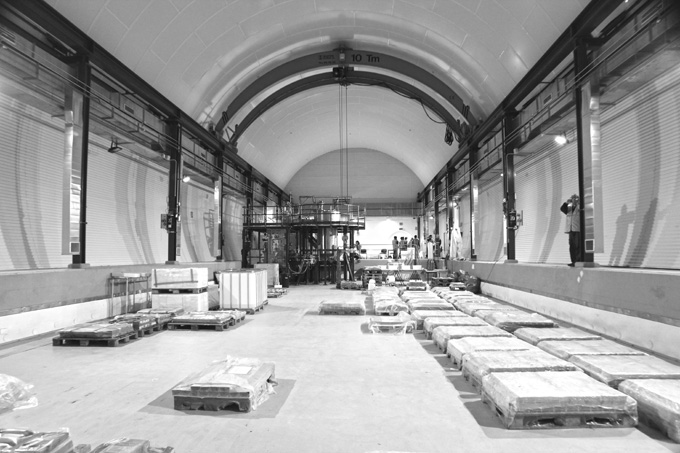
Additional information
Almost a km of rocks (850 m) separates the experimental area of the subterranean lab of Canfranc (LSC) from the peak of Tobazo mountain. A kilometer of rocks that is necessary to attenuate the shower of incoming particles, named muons (a heavier version of the electron) that fall on Earth as a consequence of the cosmic rays that bombard constantly our planet.
Inside the LSC, the rain of muons becomes a drop, tolerable for the experiments of «low background» that take place there. Among them, ANAIS, that tries to detect the weak signal produced by the interaction of particles of dark matter in the sensitive material of the device and NEXT, a very innovative experiment, based on a chamber of highly pressurized Xenon gas.
NEXT and ANAIS have in common the peculiar trait that both are looking for a needle in a haystack. The needle is an extraordinarily rare signal, produced, in the case of ANAIS, when a particle of Dark Matter (named WIMP due to its initials in English and to all effects and purposes similar to a very massive neutrino) excites an atom of the detector, producing a weak scintillation that can be detected by the sensors of the device. In the case of NEXT, the isotope Xe-136 of Xenon can suffer an exotic decay in which the atom decays emitting two electrons and NOT emitting neutrinos. In both cases, the probability of these events happening is ridiculously low, but the experiments play with the fact that matter has a huge quantity of atoms. It is indeed a Russian Roulette in which the chances of winning are infinitesimal, but the number of times that the dice is cast is immensely high. The result is, given some luck, the observation of a few interesting events on a yearly basis.
But these events (the needle) must be set apart from a true ocean of fakes, produced by spurious interactions due to background radioactivity, that includes cosmic rays as well as the activity of the rock in the laboratory walls, that are rich in radioactive elements.
Therefore, having at our disposal an underground lab is a necessary condition, but not the only one. Experiments like NEXT, whose aim (if it discovers the rare decay it’s looking for) is to demonstrate that the neutrino is its own antiparticle (a hypothesis that if it were true could explain why the Universe is made only from matter and not antimatter), need to implement extremely sophisticated experimental techniques. Xenon gas beams a weak scintillating light as an answer to the passing/presence of a charged particle amplified by the detector, in essence reconstructing a three-dimensional image of the two electrons produced by the event. This technique was invented in the seventies by David Nygren, a distinguished scientist from the Lawrence Berkeley National Laboratory (LBNL) and no less distinguished member of the NEXT collaboration, led by the spanish physicist Juan José Gómez-Cadenas.
The LSC is the second laboratory in size and importance in Europe, the little brother of the Laboratorio Nacional de Gran Sasso (LNGS). Its director, Alessandro Bettini, directed the LNGS during several years. The LSC is an enlargement of the laboratory founded in the eighties by the brothers Angel and Julio Morales, both prematurely deceased. The third member of the pioneering trio of that time, professor J.A.Villar, is nowadays the associate director of the LSC, that also counts with the continuous presence of the Physics group of the University of Zaragoza, which participates both in ANAIS and NEXT.
But the LSC also counts with a reduced but very experienced group of scientists and technicians who take care of its daily operations. For instance, the NEXT experiment requires a 100 kg of Xenon gas enriched to a degree of 90% in the Xe-136 isotope. This process requires the use of identical centrifuges (indeed, the same model) to those used to enrich uranium with military aims. The only «manufacturer» of this product is Russia. The acquisition of the enriched gas was a bureaucratic achievement almost impossible to execute, due to the big difference in commercial criteria between the spanish administration and the russian provider, and it was the responsibility of Alejandro Calvo, manager of the LSC. Yolanda Labarta is in charge of the scientific secretariat of the lab, while Susana Gutiérrez takes care of the accounting. José Jiménez, coordinator of security and maintenance, is one of those engineers in the old tradition, whose enormous practical experience is essential for the installation and functioning of the experiments. Silvia and Julian are a couple of scientists (he is a physicist, she is a chemist) whose support to the experiments is no less valuable. Finally Alfredo takes care of the mechanics, Victor of the electricity, Sergio is in charge of the computer systems and Albert of electronics.
Jot Down’s visit coincided with the meeting of the NEXT collaboration last May. The sight of the modern external building of the LSC (placed in the station of Canfranc), chock-full of international scientists, kindly led by the LSC personnel, seemed to indicate that science at the highest level is, despite all odds, indeed possible in Spain.
WEB
http://www.lsc-canfranc.es/en/index/description.html
http://www.lsc-canfranc.es/en/index.history.html
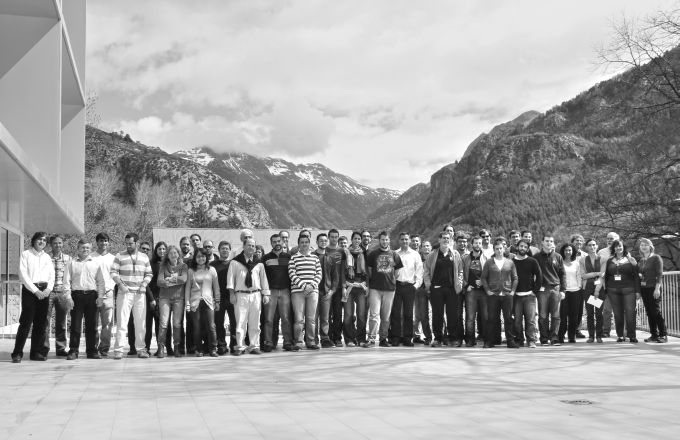
Around 60 scientists met with the objective of analyzing the most crucial aspects of the construction of the NEXT experiment (“Neutrino Telescope with a Xenon TPC”) which will be located at the LSC.
Carried out by an international collaboration, aims to discover new aspects and broaden the knowledge of the nature of the neutrinos through this neutrino-less double beta decay experiment.
Photography: Jorge Quiñoa
Transcription and traslation: Xavier Ferre
Technical review: Francesc Monrabal



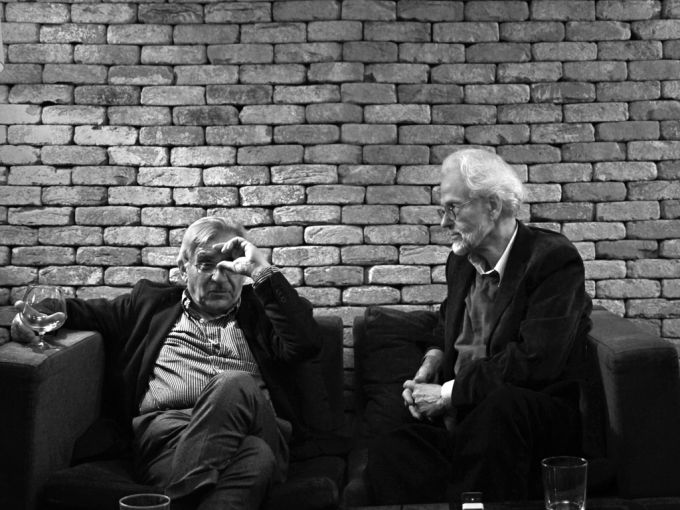








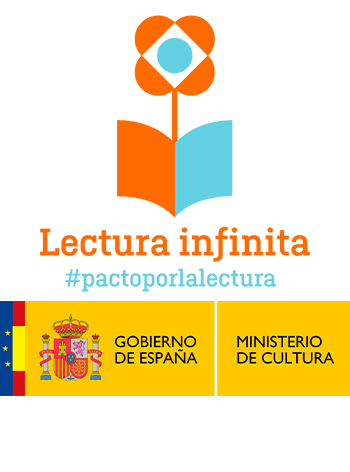
Pingback: Jot Down Cultural Magazine | David Nygren y Alessandro Bettini, la física como fuente de la eterna juventud
Pingback: Francis Halzen: “I always advise to my students ‘don’t read too many books, do things!’”
Pingback: La evolución del universo y el descubrimiento del primero de los exoplanetas se llevan el premio Nobel de Física 2019 - Tec Ofertas España